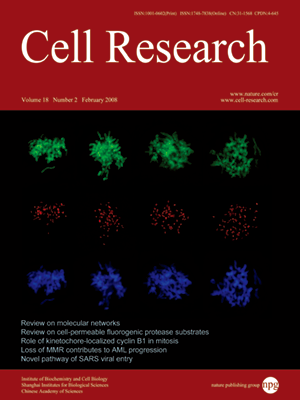
Volume 18, No 2, Feb 2008
ISSN: 1001-0602
EISSN: 1748-7838 2018
impact factor 17.848*
(Clarivate Analytics, 2019)
Volume 18 Issue 2, February 2008: 224-237
REVIEWS
Understanding biological functions through molecular networks
Jing-Dong Jackie Han
Chinese Academy of Sciences Key Laboratory of Molecular Developmental Biology and Center for Molecular Systems Biology, Institute of Genetics and Developmental Biology, Chinese Academy of Sciences, Datun Road, Beijing 100101, China
Correspondence: Jing-Dong Jackie Han(jdhan@genetics.ac.cn )
The completion of genome sequences and subsequent high-throughput mapping of molecular networks have allowed us to study biology from the network perspective. Experimental, statistical and mathematical modeling approaches have been employed to study the structure, function and dynamics of molecular networks, and begin to reveal important links of various network properties to the functions of the biological systems. In agreement with these functional links, evolutionary selection of a network is apparently based on the function, rather than directly on the structure of the network. Dynamic modularity is one of the prominent features of molecular networks. Taking advantage of such a feature may simplify network-based biological studies through construction of process-specific modular networks and provide functional and mechanistic insights linking genotypic variations to complex traits or diseases, which is likely to be a key approach in the next wave of understanding complex human diseases. With the development of ready-to-use network analysis and modeling tools the networks approaches will be infused into everyday biological research in the near future.
Cell Research (2008) 18:224-237. doi: 10.1038/cr.2008.16; published online 29 January 2008
FULL TEXT | PDF
Browse 1938


